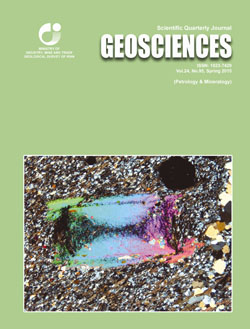Document Type : Original Research Paper
Authors
1 Ph.D. Student, Department of Geology, Faculty of Natural Sciences, University of Tabriz, Tabriz, Iran
2 Professor, Department of Geology, Faculty of Natural Sciences, University of Tabriz, Tabriz, Iran
Abstract
The Kalaibar nepheline syenitic body is located in East Azabaijan, NW of Iran. This alkalic body generally intruded semi-deeply into the Cretaceous and Eocene volcanic and sedimentary rocks. Based upon chemical classification, the composition of studied intrusive bodies are nephelines bearing syenite (nepheline syenite), nepheline bearing gabbro (alkalic gabbro), syenite and quartz monzonite (syeno-diorite) in order of abundance. In addition, the composition of accompanying dyke and pegmatitic units are nepheline syenite, syenodiorite and gabbro. Common textures of studied rocks are prophyritic granular and granular and accompanying dykes have fine grained granular, porphyritic and coarse grained granular textures. According to mineralographic studies and XRD analysis results, the main mineral phases contain orthoclase, albite, nepheline, oligoclase, hornblend, augite and Melanite. The nature of parent magma of these intrusives is potassium rich alkaline, metaluminous and miaskitic. Petrographical and geochemical studies based upon accessory and rare elements illustrate that these intrusives formed in a subduction or post collision related tectonic setting, which their lithological variety is justifiable by fractionation crystallization. The studied intrusives show the enrichment of Zn, Ba, Sr, Th and Pb and enrichment of Co, Sr, Pb and V in accompanying dykes. LREEs relative to HREEs show enrichment. Comparison of studied body with some other ones of corresponding type of the world in terms of the amount of accessory and rare elements shows that the Kalaibar nepheline syenitic body is resemble to the central Anatoly (Turkey), Zijinshan (china) and Musale (India) bodies.
Keywords

